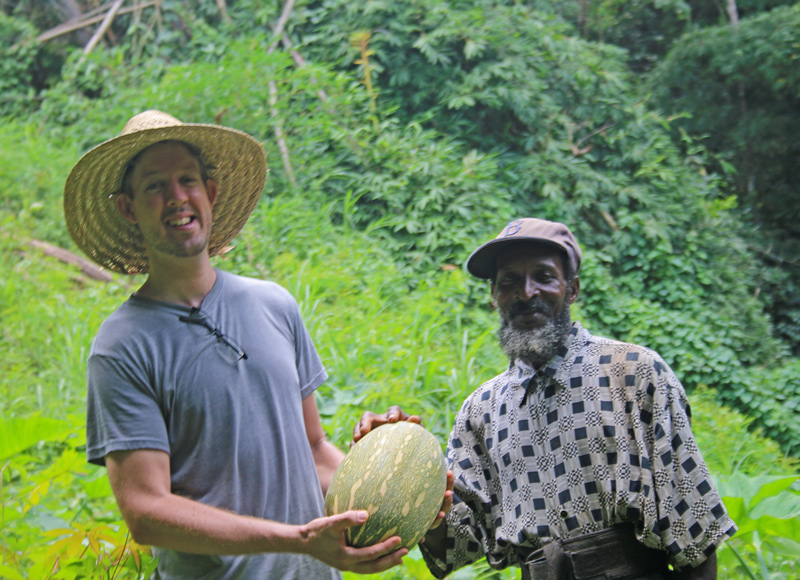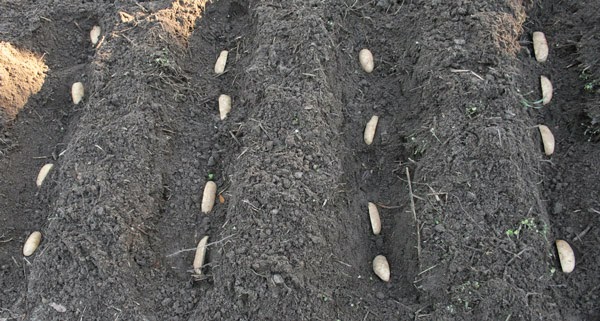I think the last frost is behind us and it’s time to really get the spring planting done.
We put in potatoes last month but we need to get everything else going. I also have more potatoes to plant but I ran out of room and need to do more tilling to catch up.
This is not an easy climate. If you plant too early, the frost will kill your seedlings. If you plant too late, the heat and the bugs will kill them.
Down in the tropics we could simply plant whenever we wanted, provided we had irrigation. The only real cycle down there was rainy/dry.
Now we have to be civilized men again and pay attention to the calendar.
Planting By the Moon
As an extra layer of difficulty, this year we are planting our gardens by moon, as revealed in the Farmer’s Almanac moon planting dates.
For March it notes:
- 13th – 17th
A most barren period, best for killing plant pests or doing chores around the farm.
- 18th – 19th
Fine for sowing grains, hay, and forage crops. Plant flowers. Favorable days for planting root crops.
- 20th – 21st
Start seedbeds. Good days for transplanting. Excellent time for planting root crops that can be planted now. Also good for leafy vegetables.
- 22nd – 23rd
Barren days, do no planting.
- 24th – 25th
Any root crops that can be planted now will do well.
- 26th – 28th
A barren period, best suited for killing plant pests. Do plowing and cultivating. Good harvest days.
- 29th – 31st
Cultivate and spray, do general farm work, but no planting. Good harvest day.
I have never paid attention to the moon before, except to plant as my Grenadian farmer friend Mike suggested. He gardened exclusively by the moon.

He would plant root crops when the moon was waning, as that would “make them go deep.” He would plant leaf and fruit crops when the moon was waxing, as that would “make them grow up.”
I sometimes planted when he said to plant, but I really didn’t pay much attention otherwise. This year, as many people have asked me about planting by the moon, I decided to just stick with the Farmer’s Almanac Guide and see how things grow.
Landrace Projects: When and What We Are Planting
This year we are working on landrace gardening projects involving corn, okra, watermelons, Seminole pumpkins and our Walmart C. maxima pumpkins.
Corn
Corn should be planted after the last frost date but I’m not sure when that will be. We could plant at the end of this week, but we have a lot to plant and don’t want to risk a late frost. April 2nd and 3rd are both favorable days for corn so we will probably plant then, as the chance of another frost at that point is minimal. We hope to put in a couple of acres of corn this year. Right now we are waiting on a tractor to disc up a neighbor’s field. We should probably also burn the field before discing and planting, as there is a lot of tall grass. Our goal with the corn is to create a strong variety that does well on just rainfall and is pest-resistant and adapted to our area. We are also breeding for rich colors.
Okra
Last year our okra did excellently, which is not surprising as it’s a Southern staple. The Burgundy did better than the other types and we saved seed to plant again. I am also going to mix in Orange Jing and a variety of other types this year and allow them to cross-breed. My goal is to make okra a reoccurring weed in our gardens. We should plant these on April 2-3 and 7-8.
Watermelons
My son Ezekiel is working on landrace watermelons. He has been planting watermelons for multiple years now. Last year he planted about ten different varieties and let them all interbreed. This year we will plant at least an acre together and see what we get. Many new varieties are being added to the mix this year and they’ll all run together and breed. If we get the timing right, we’ll have a beehive in the field while they are in bloom to facilitate crossing. We should plant these on April 7-8.
Seminole Pumpkins
We have been planting Seminole pumpkins for years. However, my breeding projects were destroyed in the tropics as I lost my original line in the new growing conditions. Since moving back to the states, I have re-started with a variety of Seminole pumpkin lines we are crossing together. Since I am more interested in pest resistance, yield and survivability, I am also mixing in other C. moschata pumpkins to make a new line we can select from. Eventually, it should be a SUPER MOSCHATA, capable of covering old trucks and mobile homes in vigorous vines while producing horrifying amounts of pumpkins. Kudzu Moschata is our aim. We are planting an acre this year. We should plant these on April 7-8.
Maxima Pumpkins
Last year we had some very delicious Maxima pumpkins which arose from the seeds of a delicious slate grey-green pumpkin I bought from Walmart at the end of 2020. The resulting offspring were a mix of types, many of which were quite delicious. If we can keep the good flavor of a Maxima but breed it for more vigor, we’ll be in great shape. We saved seeds from the 2021 harvest and I am adding multiple other Maxima types to the mix this year in the hopes of good crosses. If everything aligns well this spring, we’ll be planting an acre of Maxima pumpkins. We should plant these on April 7-8.
Final Thoughts for Spring 2022
We also need to plant cassava, yams and sweet potatoes. We should plant our yams on the 18th-21st of this month, as well as the rest of the potatoes. Cassava and sweet potatoes are more sensitive to frost, so we should plant them on the next favorable root days in April.
Today it’s raining, but if I’m going to get all this stuff in the ground, I will have to get outside and get started tomorrow. We need to dig beds, put up trellises, till, prepare more potato beds and more. Plus I need to get a buck goat to breed our does, and get a fence up, and expand the chicken run.
Everything happens fast in spring – and the added complication of following the moon makes it an even tighter schedule. It’s fun, though, and it will be an interesting experiment.


6 comments
The world is secretly a better place that David has had to leave the tropics, and will problem solve for all of us in more prevalent conditions. A gift in disguise from you to the rest of us!
Thank you
Well said Hot plants but we would like him back in Florida . Is there a different moon cycle written somewhere for the tropical/ subtropical zones?
No – same moon.
I planted 20 cassava in Marion County Florida on March 4. They had about ten days of hot weather. We had a freeze last week so I hilled them all up. When I uncovered them, many had made leaves.
This past year I tried saving canes 3 ways. I put a third in a garbage bag in my garage. I put a third in an army tent with a sand floor, and I buried a third in a box in the woods. The ones in the woods started growing in January. All the other canes died. The freeze killed the sprouts in the woods. Today I dug them up and a lot of them had rotted. About a third had roots and seemed viable so I planted them today. Next time I’m going to burying all of them in a bucket to keep some of the rain off them. What ever happened to the cowpeas you planted in the fall?
Interestingly enough, we’re following the moon in planting (as best we can) this year, too.
Another “moon cycle” thing: start ferments on waning moon; if started on waxing moon, they will spew all over. This has happened to me. My pantry still smells like fermenting garlic…
Comments are closed.